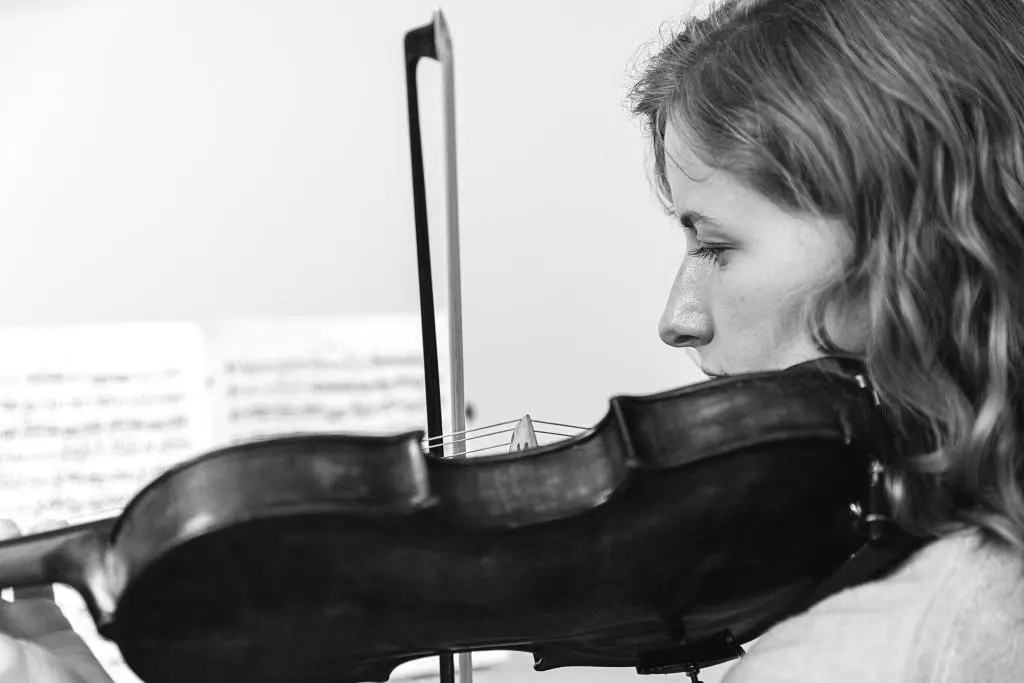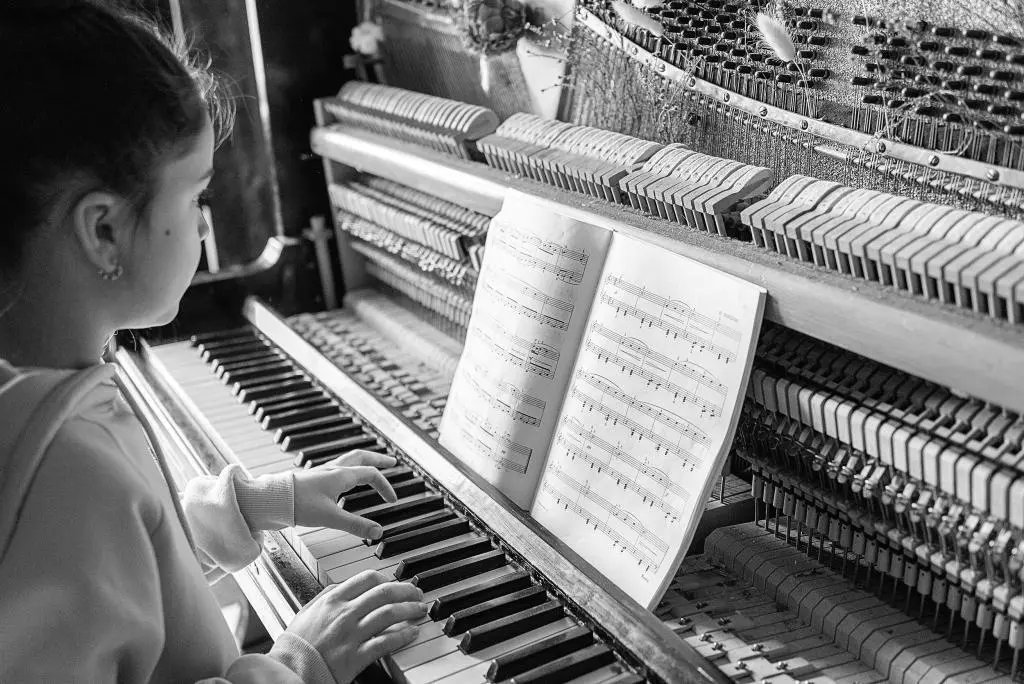An accent is the emphasis, stress, or stronger attack put on a note, set of notes, or chord.

What Does Accent Mean in Music: Table of Contents
Music, in its essence, is a language of emotions, stories, and expressions. Just as in spoken language, where we emphasize certain words to convey deeper meanings or emotions, in music, we have accents. These accents play a pivotal role in shaping the narrative of a musical piece, guiding the listener through its highs and lows, its moments of tension and release.
What is an Accent in Music?
An accent in music is a particular emphasis or stress placed on a specific note or set of notes. Think of it as the musical equivalent of bolding or italicizing a word in a sentence. It’s that note which stands out, either because it’s played louder, held longer, or delivered with a particular punch. Accents can be subtle, gently nudging the listener’s attention, or they can be bold, demanding immediate focus. They’re the markers that musicians use to highlight certain parts of their musical story, ensuring that the listener doesn’t miss out on any crucial plot points.
Why are Accents Essential in Musical Expression?
Accents are the soul of musical dynamics. They breathe life into a composition, transforming a plain sequence of notes into a vivid, emotional journey. Imagine reading a book where every word has the same weight, with no variation in tone or emphasis. It would feel monotonous and flat. Similarly, without accents, music would lack depth and character.
Accents serve as guideposts, directing the flow of a musical piece. They can introduce a dramatic twist, signal the climax of a song, or gently conclude a melodic phrase. By emphasizing certain notes, musicians can convey a range of emotions – from the passionate intensity of a love song to the quiet despair of a melancholic tune.
Moreover, accents play a crucial role in rhythm and timing. In dance music, for instance, accents on specific beats can guide dancers, ensuring their movements align with the music. In orchestral pieces, they can synchronize different instruments, creating a harmonious blend of sounds.
In essence, accents are the unsung heroes of musical storytelling. They shape the narrative, add depth to melodies, and ensure that every musical story is told just as the composer intended.

Delving into the Dynamics of Accents
The world of music is vast and intricate, with each note carrying a universe of emotions and stories. Within this expanse, accents act as powerful tools, adding depth, nuance, and character to compositions. But what drives these dynamics? Let’s embark on a journey to understand the science and art behind musical accents.
The Science Behind Accents in Music
Music, at its core, is a blend of frequencies, rhythms, and patterns. When these elements come together harmoniously, they evoke emotions, memories, and sensations. Accents, in this symphony of sounds, act as catalysts, intensifying the emotional impact of a piece.
How do Accents Amplify Musical Emotion?
Accents, by definition, emphasize specific notes or beats, making them stand out. This emphasis can mirror our heartbeats, resonate with our breathing patterns, or even align with our brainwaves. When a note is accented, it triggers a stronger neural response, making us more attuned to its emotional undertone. Whether it’s the heightened tension in a suspenseful movie score or the jubilant crescendo in a celebratory song, accents play a pivotal role in shaping our emotional response. They act as emotional amplifiers, taking us deeper into the music’s narrative and making us feel every high and low more intensely.
The Art of Emphasizing Notes: A Closer Look
While the science of accents is fascinating, the artistry behind them is equally compelling. Musicians, with their innate sense of timing and emotion, use accents as paintbrushes, coloring their canvas of melodies and rhythms.
How do Accents Shape Melodies and Rhythms?
Melodies are like flowing rivers, moving seamlessly from one note to another. Accents act as boulders in these rivers, creating ripples and waves, adding texture and depth. By emphasizing certain notes, musicians can guide listeners, hinting at what’s to come or reminiscing about what’s passed.
Rhythms, on the other hand, are the heartbeat of music. They set the pace, create momentum, and build anticipation. Accents in rhythms can be likened to a sprinter’s footfalls – some are light and swift, while others are heavy and deliberate. By playing with these “footfalls,” musicians can create intricate rhythmic patterns, making listeners tap their feet, sway their bodies, or even jump in exhilaration.
Accents are the brushstrokes in a musical masterpiece. They add depth, create contrasts, and breathe life into melodies and rhythms, making each composition unique and memorable.

The Diverse World of Accent Types
In the vast realm of music, accents are the unsung heroes that add depth, emotion, and character to a piece. But not all accents are created equal. Their diversity is as rich as the musical notes themselves, each bringing its unique flavor and essence to a composition. Let’s delve into the multifaceted world of accent types and explore their profound impact on music.
Dynamic Accents: The Power of Volume
At the heart of music lies dynamics – the variations in loudness and softness. Dynamic accents harness this power, emphasizing specific notes by altering their volume. Whether it’s the soft whisper of a flute or the roaring crescendo of an orchestra, dynamic accents create moments that capture the listener’s attention.
How do Dynamic Accents Elevate Musical Pieces?
Imagine a serene landscape painting. Now, add a burst of sunlight piercing through the clouds, illuminating a part of the scene. That’s what dynamic accents do to music. They spotlight certain sections, making them stand out. By playing with volume, musicians can evoke a myriad of emotions – from the gentle caress of a lullaby to the passionate outcry of a rock anthem. Dynamic accents are the heartbeats of a composition, giving it life and energy.
Agogic Accents: Playing with Duration
While dynamic accents play with volume, agogic accents toy with time. They emphasize a note by altering its duration, either elongating it or cutting it short. It’s a subtle yet powerful tool that adds a unique rhythmical flavor to a piece.
Why is Timing Everything in Agogic Accents?
Timing, in music, is akin to pacing in storytelling. It sets the rhythm, builds anticipation, and delivers the climax. Agogic accents masterfully manipulate this pacing. By extending or shortening a note, they create moments of surprise, tension, or resolution. A prolonged note can evoke longing, while a brief one can add a playful twist. In the dance of melodies, agogic accents are the unexpected moves that leave a lasting impression.
Tonic Accents: The Pitch Perfect Emphasis
Beyond volume and duration lies the realm of pitch. Tonic accents delve into this domain, emphasizing notes by altering their pitch. It’s a delicate art, one that requires precision and finesse.
How do Tonic Accents Resonate with Listeners?
Pitch is a powerful emotional trigger. A high note can evoke excitement or tension, while a low one can convey calmness or melancholy. Tonic accents leverage this emotional palette, coloring notes with varied pitches to create a rich tapestry of feelings. They can turn a simple melody into an emotional roller coaster, taking listeners on a journey of highs and lows. In the symphony of sounds, tonic accents are the soulful solos that touch the heart.
Each type of accent, with its unique characteristics, enriches the musical experience, making every note, every beat, and every melody resonate deeply with listeners.
Accents Across the Musical Spectrum
Music, in its vastness, spans across a myriad of instruments and genres, each with its unique voice and character. Within this diverse spectrum, accents play a pivotal role, adding depth, nuance, and flavor to every note and beat. Let’s embark on a journey to explore how accents manifest across different instruments and musical styles, painting a vivid picture of their universal yet distinct impact.
Instruments and Their Unique Accents
Every instrument, from the delicate strings of a violin to the resonant beats of a drum, has its own way of producing and emphasizing accents. These instruments, with their distinct timbres and capabilities, offer a rich palette of accentuation techniques.
Which Instruments Shine with Accents?
- Piano: Known for its dynamic range, the piano can produce soft, subtle accents with gentle keystrokes or bold, dramatic ones with forceful presses. The contrast between the two can create a mesmerizing ebb and flow in compositions.
- Violin: With its ability to sustain notes, the violin can create beautiful agogic accents, elongating certain notes to evoke deep emotions.
- Trumpet: Its sharp and piercing tone allows for striking dynamic accents, especially in jazz and orchestral pieces.
- Drums: The very essence of rhythm, drums use accents to create patterns and beats, guiding the tempo of a song. From soft taps to thunderous bangs, their accents are the heartbeat of many compositions.
- Flute: Its ethereal and airy sound can produce tonic accents that add a whimsical or dreamy quality to melodies.
In essence, every instrument has its unique accent signature, and it’s the mastery of these accents that differentiates a novice from a virtuoso.
Accents in Different Musical Genres
Just as instruments have their accent nuances, musical genres, with their distinct rhythms, melodies, and cultural roots, utilize accents in varied and unique ways.
How do Accents Vary from Jazz to Rock?
- Jazz: Known for its improvisational nature, jazz uses accents to punctuate solos, highlight syncopated rhythms, and add flair to brass sections. The spontaneous and free-flowing accents in jazz are its lifeblood, giving it its characteristic swing.
- Rock: Powerful and bold, rock music employs strong dynamic accents, especially in guitar riffs and drum patterns. These accents add to the genre’s energy and drive, making listeners headbang to its beats.
- Classical: This genre, with its intricate compositions, uses a blend of dynamic, agogic, and tonic accents to convey deep emotions, tell stories, and create dramatic crescendos.
- Reggae: With its offbeat rhythms, reggae uses accents to emphasize the upbeat, creating its signature laid-back and groovy feel.
- Blues: Rooted in emotion, blues uses accents to highlight its soulful guitar solos and poignant vocal lines, resonating with listeners’ hearts.
Across genres, accents are the threads that weave the fabric of music, giving each style its unique texture, feel, and soul.
From instruments to genres, accents are the unsung heroes that shape the musical landscape, making every note resonate and every beat come alive.

Decoding Accents in Sheet Music
Sheet music is the canvas upon which composers paint their musical visions. It’s a world of symbols, notations, and signs, each conveying specific instructions to the musician. Among these myriad symbols, accents hold a special place. They guide the performer, indicating where emphasis is needed, and in doing so, breathe life into the composition. Let’s delve into the world of sheet music and unravel the mysteries of accents.
Symbols and Signs: The Language of Accents
In the realm of sheet music, accents are represented by specific symbols placed above or below a note. These symbols are the composer’s way of communicating with the performer, indicating where and how emphasis should be applied.
How to Interpret Accent Markings in Scores?
- Regular Accent ( > or ^ ): Often referred to as a “sideways arrow”, this symbol indicates that the note should be emphasized or played louder than surrounding notes.
- Staccato ( . ): A small dot above or below a note, signaling that it should be played shortly and detached, giving it a distinct emphasis.
- Tenuto ( – ): Represented by a horizontal line, it instructs the musician to hold the note for its full length, ensuring it stands out.
- Marcato ( ^ ): A stronger accent, often referred to as the “hat”, it demands a note to be played more forcefully than a regular accent.
- Sforzando ( sfz ): This indicates a sudden, sharp accent, urging the performer to play the note with a burst of energy.
Understanding these symbols is crucial for musicians, as they dictate the dynamics and expression of a piece. Interpreting them correctly can be the difference between a good performance and a great one.
Practical Tips for Musicians on Accents
Accents, while represented by symbols, are more than just markings on paper. They are the soul of a piece, and mastering them requires practice, intuition, and understanding.
How to Master Accents in Performance?
- Practice with Intention: When practicing a new piece, pay special attention to accent markings. Isolate sections with complex accent patterns and practice them separately.
- Listen Actively: Listen to professional recordings of the piece you’re learning. Notice how seasoned musicians interpret and execute accents.
- Experiment with Dynamics: Play around with volume levels. Sometimes, an accent can be emphasized not just by playing it louder, but by playing surrounding notes softer.
- Feel the Rhythm: Accents often align with rhythmic patterns. Tapping your foot or using a metronome can help you nail the timing.
- Seek Feedback: Play for peers, teachers, or mentors and ask for feedback specifically on your accentuation. An external ear can often catch nuances you might miss.
- Visualize the Emotion: Think about the emotion or story the composer might be trying to convey with each accent. Visualizing this can help in delivering a more authentic performance.
Mastering accents is a journey of continuous learning and refinement. With dedication, practice, and a keen ear, any musician can harness the power of accents to elevate their performance.
Accents, in sheet music, are the bridges between a composer’s vision and a musician’s rendition. They are the subtle nuances that bring depth, emotion, and character to a piece, making it resonate with listeners.
The Evolution of Accents in Music History
Music, a timeless art form, has evolved and transformed over millennia, mirroring the changing tides of societies, cultures, and civilizations. Within this vast tapestry of musical evolution, accents have played a pivotal role, shaping and being shaped by the eras they’ve traversed. Let’s embark on a journey through time, tracing the footsteps of accents in the annals of music history.
Historical Journey of Accents
From the haunting chants of ancient monasteries to the grand symphonies of the classical era, accents have been the silent guides, directing the ebb and flow of melodies and rhythms.
How have Accents Transformed Over Centuries?
- Ancient Music: In the earliest forms of music, accents were organic, often mirroring the natural rhythms of life, like the cadence of a heartbeat or the patterns of nature. Instruments like drums and flutes used natural accents to invoke emotions or communicate messages.
- Medieval and Renaissance: As music became more structured, so did the use of accents. Gregorian chants, with their flowing melodies, used subtle accents to emphasize certain syllables or words. Instruments like the lute or harpsichord began to incorporate more deliberate accentuation in their compositions.
- Baroque and Classical Eras: The age of grand orchestras and intricate compositions saw a more sophisticated use of accents. Composers like Bach, Mozart, and Beethoven used dynamic, agogic, and tonic accents to add depth and drama to their pieces, guiding the listener through a roller coaster of emotions.
- Romantic Era: This era, marked by its expressive and emotive music, saw the use of accents to convey deep emotions, from the passionate crescendos of Tchaikovsky to the melancholic melodies of Chopin.
Accents, over the centuries, have evolved from natural emphases to sophisticated tools of expression, mirroring the evolution of music itself.
Modern Music and the Role of Accents
The 20th and 21st centuries, with their technological advancements and cultural revolutions, have seen a dynamic shift in the world of music. Genres like rock, jazz, pop, and electronic have emerged, each with its unique take on accents.
Are Accents More Prominent in Today’s Music?
Absolutely! Modern music, with its diverse genres and global influences, relies heavily on accents to create its signature sounds.
- Rock and Pop: These genres, known for their catchy beats and melodies, use strong dynamic accents to create memorable hooks and choruses. The iconic guitar riffs and drum solos are often accent-driven, making them stand out.
- Jazz: An improvisational genre, jazz uses accents to punctuate solos and highlight syncopated rhythms, giving it its characteristic swing.
- Electronic and EDM: In the digital age, electronic music uses synthesized accents to create beats and drops, driving the energy of the track.
- Hip-hop and Rap: These genres, rooted in rhythm and poetry, use accents to emphasize certain words or beats, adding flow and groove to the verses.
Modern music, with its fusion of cultures and technologies, has elevated the role of accents, making them integral to the identity of each genre.
From the ancient rhythms of nature to the synthesized beats of today, accents have journeyed through time, evolving and adapting, yet remaining the heartbeat of music. They are the unsung heroes that have shaped the course of music history, making every note, every beat, and every genre resonate with listeners across ages.
FAQs: Addressing Common Queries on Accents
The world of music is vast and intricate, and within it, accents hold a special place. They are the subtle nuances that add depth, emotion, and character to a piece. But as with any element of music, they come with their own set of questions and curiosities. Let’s dive into some frequently asked questions about accents and shed light on their mysteries.
Do All Musical Pieces Require Accents?
Not necessarily. While accents are powerful tools that can enhance the emotional and rhythmic impact of a piece, they are not mandatory in every composition. Some pieces might be deliberately written without strong accents to achieve a specific mood or atmosphere, such as a serene, flowing ambient track or a meditative chant. However, even in such compositions, natural accents might arise from the inherent rhythm or melody. Accents are like spices in a dish – while they can elevate the flavor, not every dish requires the same amount or type.
How Do Accents Differ in Vocal vs. Instrumental Music?
Both vocal and instrumental music utilize accents, but the way they manifest can vary:
Vocal Music: In vocal compositions, accents often align with the lyrics’ natural rhythm and emphasis. For instance, in a song, certain words or syllables might be stressed to convey emotion or to align with the song’s message. Vocalists might also use breath, tone, and pitch variations to create accents.
Instrumental Music: Here, accents are created using volume, duration, and pitch variations. Instruments, depending on their timbre and capabilities, have unique ways of producing accents. For example, a guitar might use a strong strum for a dynamic accent, while a piano might hold a key longer for an agogic accent.
While the methods might differ, the goal remains the same: to emphasize specific parts of the composition and guide the listener’s emotional journey.
Can Accents be Overused in a Composition?
Yes, like any musical element, accents can be overused. Just as a paragraph filled with bolded words might confuse a reader, a composition overloaded with accents can overwhelm a listener. Overemphasis can make a piece feel chaotic, disjointed, or even monotonous, as the constant highlights might diminish the impact of truly significant moments. It’s essential for composers and musicians to strike a balance. Accents should serve the music, not dominate it. They should enhance the narrative, not overshadow it.
How do accents influence the emotional impact of a composition?
Accents act as the pulse of a composition, emphasizing certain notes to evoke specific emotions. Whether it’s the dramatic crescendo in a classical symphony or the rhythmic beat in a rock song, accents play a pivotal role in shaping the mood. By stressing particular notes, accents can create tension, release, joy, sorrow, or any emotion in between, allowing the composer to convey their intended message more effectively.
What are the different types of accents used in music notation?
As previously discussed, there are several types of accents in music notation, including dynamic, agogic, and tonic accents. Each type serves a unique purpose, guiding musicians on how to emphasize specific notes, either through volume, duration, or pitch. Understanding these accent types is crucial for musicians as they dictate the dynamics and expression of a piece.
What is the role of accents in metrically organized music?
In metrically organized music, where beats are grouped into regular patterns called measures or bars, accents help define the meter. They emphasize the primary beats, making it easier for listeners and performers to identify the rhythmic structure. Whether it’s the strong-weak pattern of a duple meter or the strong-weak-medium of a triple meter, accents serve as the guiding lights.

